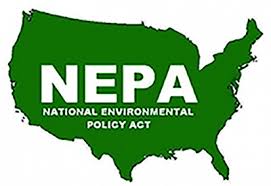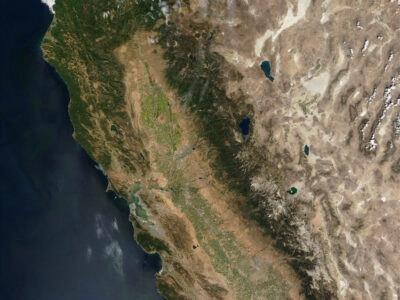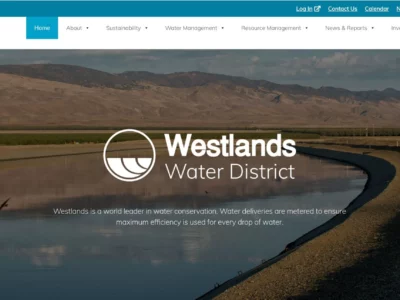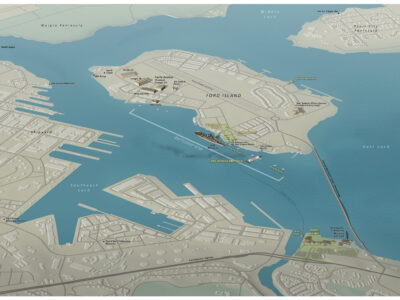Water
Deciphering NEPA 2.0
Here’s everything you wanted to know about the “New NEPA” but were afraid to ask.
NEPA was long an island of legal stability, standing almost unamended for over a half century. Then in the summer of 2023, everything changed. As a rider on the agreement to raise the debt ceiling, Congress extensively rewrote and expanded NEPA, gifting us with a new statutory regime. As I’ve written before — and discuss …
Continue reading “Deciphering NEPA 2.0”
CONTINUE READINGAmerica’s Leading Environmental Court
Hint: It’s in the southernmost state. Which is not Florida.
The state court on the cutting edge of environmental law is a long way from the major population and media centers, which may be one reason it doesn’t get much attention. It deserves more. The Hawaiian Supreme Court has been forging new paths in environmental law that may lead the way for other courts in …
Continue reading “America’s Leading Environmental Court”
CONTINUE READINGCalifornia Water Law Symposium is this Saturday in San Francisco
This student-organized event will focus on “Diversifying Solutions to Water Governance in California”
If you’re interested in California water, the 20th Annual California Water Law Symposium is a great way to spend this Saturday! The symposium is a collaborative student-run event that consistently brings together leading minds in water law and policy to discuss California’s critical water issues. Students from 7 northern California law schools—led by a stellar …
Continue reading “California Water Law Symposium is this Saturday in San Francisco”
CONTINUE READINGThe Long Life and Sudden Demise of Federal Wetlands Protection
Here’s a timeline of events.
It’s no wonder that one EPA staffer’s reaction to the Supreme Court ruling was a single word: “Heartbroken.” In 2023, the Supreme Court ended fifty years of broad federal protection to wetlands in Sackett v. United States. It is only when you look back at the history of federal wetland regulation that you realize just …
Continue reading “The Long Life and Sudden Demise of Federal Wetlands Protection”
CONTINUE READINGEmmett Institute Symposium: Powering the Future
This is a critical moment in the energy transition for plotting the course of mineral extraction, with communities and the environment in mind.
If you ever find yourself passing through southwest Montana, go visit the Berkeley Pit and contemplate resource extraction. You pay a couple bucks to a guy in a trailer; walk under some razor wire and through a long, disorienting white tunnel; then stand and stare out at the most beautiful turquoise sea of toxic …
Continue reading “Emmett Institute Symposium: Powering the Future”
CONTINUE READINGEvaluating Voluntary Agreements in the Bay-Delta Watershed
by Nell Green Nylen, Felicia Marcus, Dave Owen, and Michael Kiparsky
Updates to flow and other regulatory requirements for California’s Bay-Delta watershed are long overdue. For much of the last 12 years, state political leadership has prioritized efforts to develop voluntary agreements (VAs) with water users over completing updates to the watershed’s water quality standards. Now the State Water Resources Control Board has restarted the regulatory …
Continue reading “Evaluating Voluntary Agreements in the Bay-Delta Watershed”
CONTINUE READINGSaving the Planet, One Case at a Time
These 50 law school clinics are doing vital work on environmental issues across the country.
Law school clinics are where the proverbial rubber meets the road. They introduce students to the realities of lawyering. Often, they are a law school’s most important form of public service. Environmental law clinics have blossomed across the country. Today’s post provides a directory to the clinics. There are several sites that promise comprehensive lists …
Continue reading “Saving the Planet, One Case at a Time”
CONTINUE READINGCalifornia Courts Foil Westlands Water District’s Grinch-Like Water Grab
Westlands’ Efforts to Permanently Privatize California Water Opposed by Unique Coalition & Rejected by Skeptical Judges
While there’s a great deal that’s dysfunctional and downright wrong about water law and policy in California, occasionally there are positive developments to report. So it’s most satisfying to end 2023 with some good news regarding water in the Golden State. This is the saga of how the Westlands Water District tried to privatize a …
Continue reading “California Courts Foil Westlands Water District’s Grinch-Like Water Grab”
CONTINUE READINGPearl Harbor Today
82 years after the attack, what is the state of the harbor?
Today is Pearl Harbor Day, the anniversary of the Japanese attack that launched the U.S. into World War II. Those of us who don’t live in Hawaii may not think much about the harbor, but I started to wonder how things were going environmentally there. The geography is more complex than I had expected. I …
Continue reading “Pearl Harbor Today”
CONTINUE READINGWhy Do Small Changes in Global Temperature Matter So Much?
One problem is that we’ve pursued optimization rather than robustness.
Scientists are warning us that even comparatively small changes in average temperature may have disastrous results. If you turn up your thermostat 2 ºC (about 3.6 ºF), the difference may be noticeable but it’s no big deal. So why is that a scary increase in global temperatures? Some reasons are physical, particularly the difference between …
Continue reading “Why Do Small Changes in Global Temperature Matter So Much?”
CONTINUE READING













